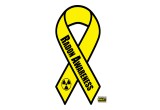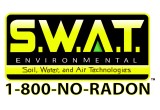
Testing for Radon Gas in Schools Could be Life Saving
Lansing, MI, January 25, 2017 (Newswire.com) - Parents will do anything to keep their kids safe and out of trouble. One of the ways parents can accomplish this is having their children go to school. In fact, the phrase “Stay in school” is said in hopes of children having a long, happy and successful life. However, what if schools are one of the most harmful places that children could be in? SWAT Environmental, nationwide radon mitigation company, is working to help this situation. Many schools across the country are hotbeds for disease, all because of one common factor: Radon gas.
Radon is a naturally occurring, colorless, odorless, and tasteless radioactive gas. Forming from the natural decay of uranium in the ground, radon is found in nearly every soil, which puts everyone at risk. It seeps through cracks in foundations and pollutes the air inside buildings. Radon is tremendously harmful to your body and comes with extreme consequences. This undetectable gas is the second-leading cause of lung cancer, only falling short to smoking. Since radon is relatively invisible to the senses, testing is the only way to know if there are high levels in buildings one visits daily.
Diana Cotton, Director of Marketing at SWAT Environmental, a nation-wide Radon mitigation company, urges all parent/teacher organizations to petition their school districts to conduct radon testing seasonally every other year.
Diana Cotton, Director of Marketing and Media
Radon gas in schools is seen as a very important issue to many parents and school officials. Since children are young and still developing, they are more susceptible to the effects of this gas. School buildings have varying levels and foundation structures, so every classroom will be different with complex radon gas entryways. Testing every room is very important for this reason. Schools test for lead, asbestos and other dangerous air-borne toxins stemming from the building’s foundation, adding one more test could only be more beneficial.
The EPA suggests that every school get tested so they can take the appropriate steps in rectifying the issue. However, not every school acts on this suggestion. Studies have shown that over half the school districts in the country lack the proper legislation and/or policies for testing schools for the hazardous Radon gas. To be more exact, the Environmental Law Institute reports only 12 out of the 50 states have laws or regulations about radon in school buildings. Breaking it down even more, just seven out of those 12 states require testing, and two out of those seven states require action to reduce high levels of radon. This means that a large percentage of children in public schools across the country could be at risk for life-threatening illnesses.
Diana Cotton, Director of Marketing at SWAT Environmental, urges parent/teacher organizations to petition their school districts to conduct radon testing every other year, per EPA standard.
However, Radon gas doesn’t have to purely be frightening. There is a way to reduce the amount of Radon gas in school building and keep the gas at a safe level. After buildings have been tested, if results show an elevated levels, contact your local Radon mitigation specialist. A team of technicians will install fans that pull the radon gas out from under the building’s foundation, leaving as safe environment for children.
SWAT Environmental has mitigated federal, state, and commercial buildings dating back to 1988. They offer customized resolutions to radon problems effecting schools that children attend daily.
Now is the time to test for Radon gas presence in the school building. People who are unaware if their school has been tested need to bring it to the attention of the school administrators. Make sure there is a conversation about what Radon gas is, why it is important to test for it, and how to reduce the gas if there are high levels. Why not take the one test that can determine the safety of schools?
Media Contact:
Diana Cotton
Phone: 517-908-3262
Email: dianac@swat-radon.com
Source: SWAT Environmental
Share:



